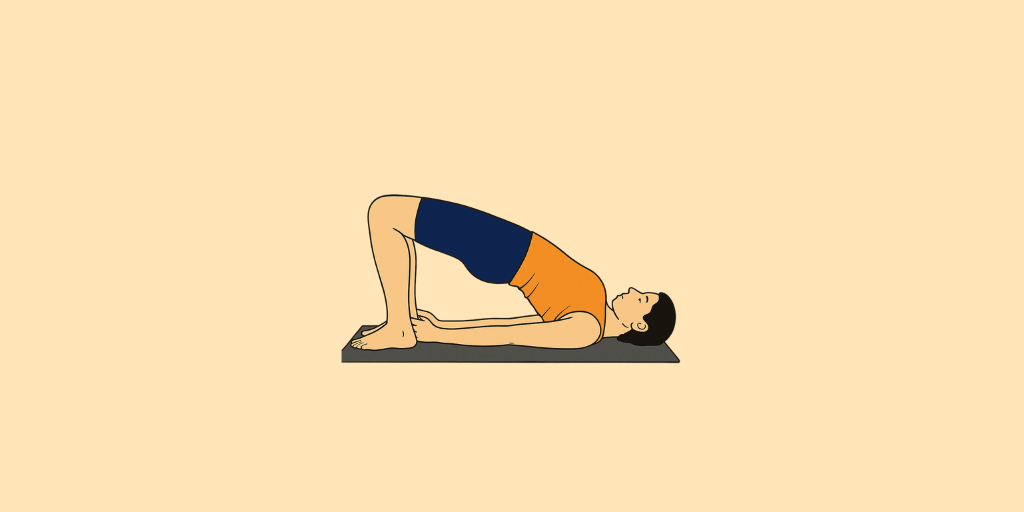Sanskrit Name: सेतु बन्ध आसन
English Name : Bridge Pose
Description:
Setubandhasana, commonly known as Bridge Pose, is a key backbend that enhances spinal strength, boosts flexibility, and encourages relaxation. The term originates from Sanskrit, where “Setu” (सेतु) translates to “bridge,” and “Bandha” (बन्ध) signifies “lock” or “bond,” representing the body’s formation of a bridge. This pose is frequently practiced in Hatha Yoga due to its beneficial effects on the back, nervous system, and digestive health.
To execute Setubandhasana, lie on your back with your knees bent and feet positioned hip-width apart. Press your feet into the ground, engage your core, and elevate your hips while keeping your shoulders and arms on the floor. This creates a gentle arch in the body that resembles a bridge, improving spinal flexibility and blood flow.
Traditionally, this pose has been utilized in yoga practices to enhance the flow of pranic energy along the spine. The mild inversion of Setubandhasana helps soothe the mind and reduce stress and fatigue. It is often included in therapeutic yoga routines aimed at addressing back pain, stimulating the thyroid, and promoting relaxation. However, those with significant spinal injuries, neck problems, or recent surgeries should refrain from practicing it. Regular engagement with this pose fosters balance, stability, and overall health, making it a beneficial component of any yoga practice.
Benefits:
- Strengthens the Back: This asana engages the muscles of the back, helping to alleviate lower back pain and improve overall spinal health.
- Opens the Chest: By lifting the chest and shoulders, it expands the rib cage, enhancing lung capacity and promoting better breathing.
- Stimulates Thyroid Function: The pose stimulates the thyroid gland, which can help regulate metabolism and energy levels.
- Improves Circulation: The inversion aspect of the pose enhances blood flow, particularly to the heart and brain, promoting cardiovascular health.
- Reduces Stress and Anxiety: The gentle stretch and focus on breathing can help calm the mind, reducing stress and anxiety levels.
- Alleviates Digestive Issues: The abdominal compression stimulates digestion and can relieve constipation.
- Therapeutic for Sciatica: This asana can help relieve sciatica pain by stretching the spine and opening the hips.
Medical Conditions(Relief):
Incorporating Setubandhasana into a regular practice can contribute to overall physical and mental well-being. Setubandhasana, or Bridge Pose, can be beneficial for various medical conditions. It aids in alleviating lower back pain by stretching and strengthening the spine. Additionally, it can help reduce stress and anxiety, promoting relaxation. This pose may also assist in improving digestion and alleviating symptoms of asthma by expanding the chest and lungs. Furthermore, it can enhance blood circulation and stimulate the thyroid gland, contributing to overall hormonal balance.
Medical Conditions(Avoid):
- Neck Injuries: Individuals with neck injuries should be cautious, as the pose places pressure on the neck.
- Back Problems: Those with severe back issues, such as herniated discs or chronic back pain, should avoid this asana to prevent exacerbation of their condition.
- Knee Injuries: People with knee injuries or chronic knee pain may find this pose uncomfortable and should avoid it.
- Pregnancy: Pregnant women, especially in the later stages, should avoid this pose due to the pressure it places on the abdomen.
- Shoulder Injuries: Those with shoulder injuries should refrain from this pose, as it requires shoulder stability and can cause strain.
- Recent Surgery: Individuals recovering from abdominal or spinal surgery should avoid this pose until fully healed.

